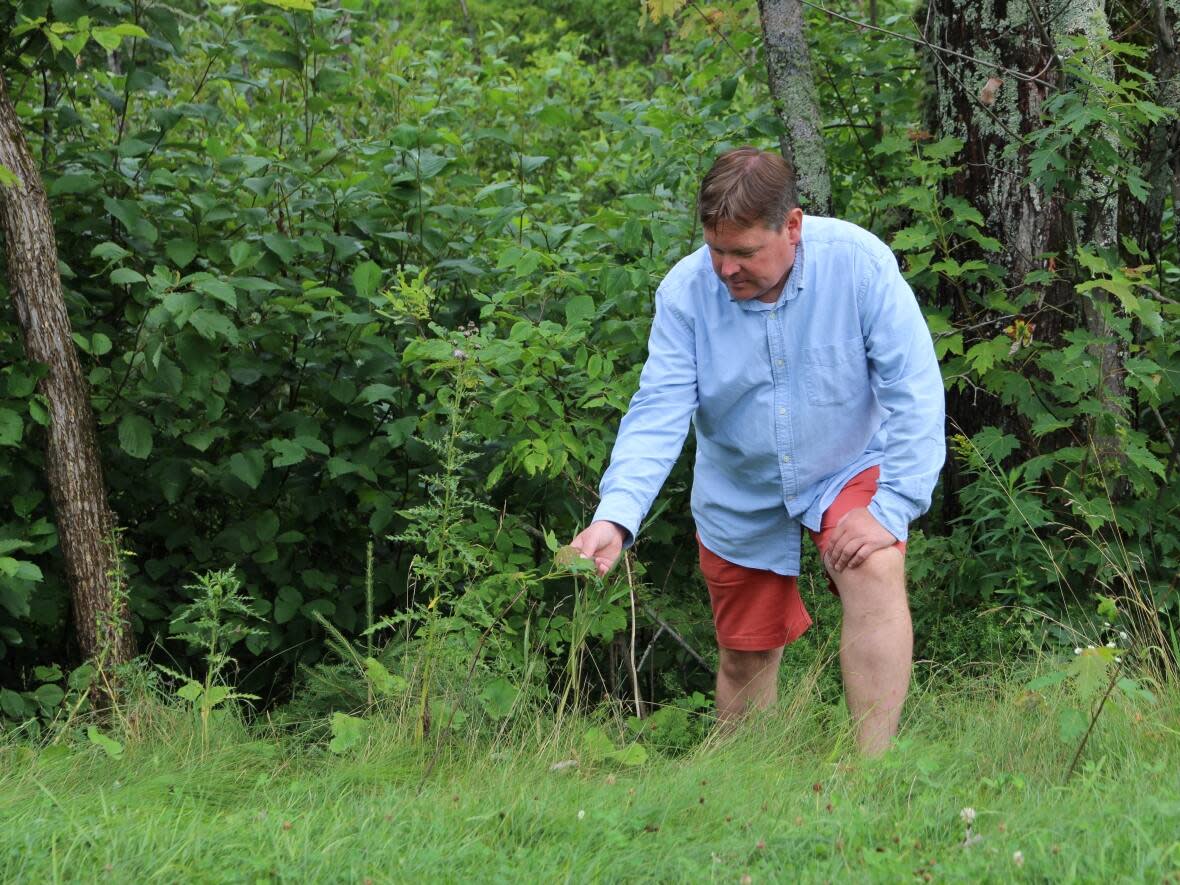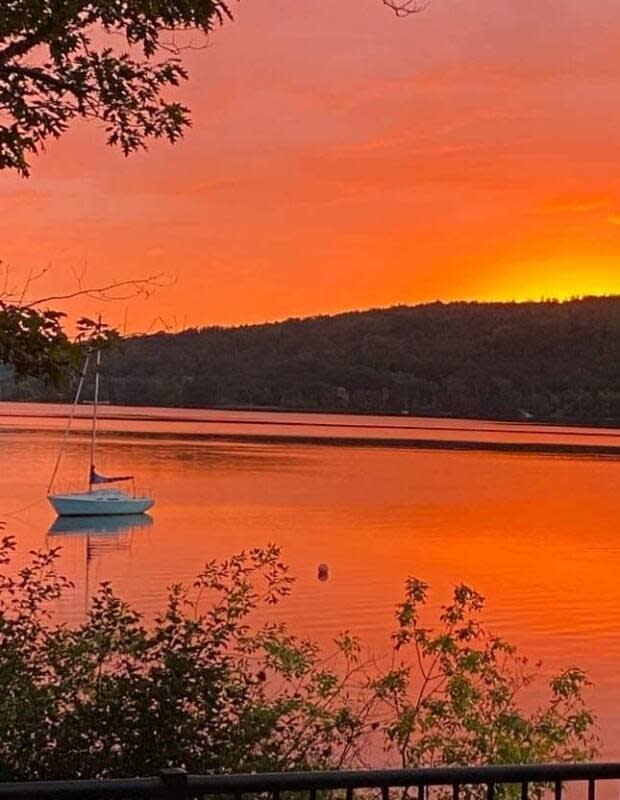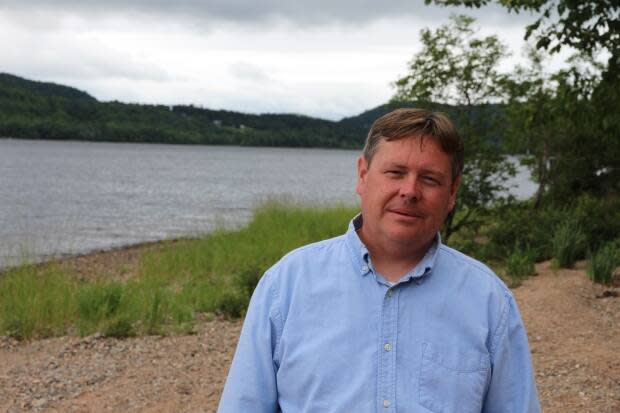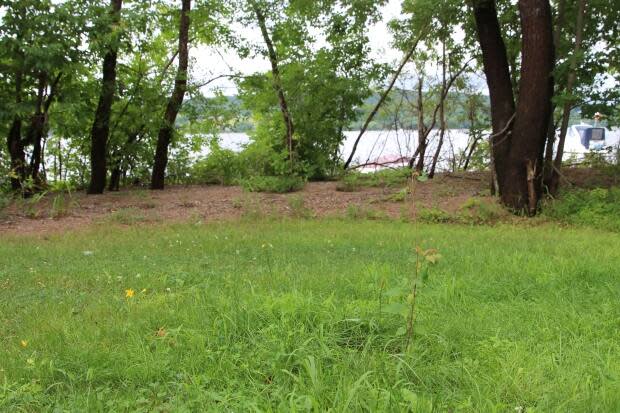1,500 trees and shrubs planted to slow erosion along Belleisle shoreline

Sandy and Doug Hall have been watching their shoreline along the Belleisle Bay slowly disappear over time.
The couple was quick to volunteer for a project aiming to mitigate erosion by planting 1,500 native trees and shrubs on private property throughout the Belleisle watershed in southern New Brunswick.
"Because of the flooding that happens every spring, our beach is being taken away, so we were quite interested in what we could do to help preserve it," Sandy said.
As part of its Plant Your Bank project, the Belleisle Watershed Coalition planted about 40 young trees and shrubs on the Hall's property in July free of charge. The Halls are optimistic the new growth will make a difference in the years to come.
"Anything that we can do to help the bay water quality and ecosystem, that's what we're hoping for," she said. "This is a beautiful place to live."

The Belleisle watershed covers about 37,000 hectares — from Pearsonville to Lower Kars on the northern side then Mercer Settlement to Kingston Corner on the southern side. According to the coalition, the Belleisle Bay itself is an offshoot of the St. John River but also has 20 named tributaries feeding into it.
Colin Forsythe, the group's executive director, said there are many benefits to planting native vegetation along bodies of water. He said mature trees and shrubs naturally work as a barrier to help reduce runoff sedimentation and fertilizers while also cooling water temperatures and providing habitat for wildlife.
"It is a huge benefit and one of the best ways we can step in to combat the degradation we see in our watershed and of course to help to mitigate some of the impacts we are now seeing because of climate change," he said.
The coalition looks after initial costs, labour and any necessary government permits associated with planting the trees and shrubs. The only expectation from property owners is that they water the saplings weekly until they become established.
"We try to make it a minimal commitment from the property owners, and as cheap and easy as possible," he said.

The group planted about 800 trees and shrubs this past June and July throughout the Belleisle watershed. To help ensure the survival of the vegetation, it's waiting until temperatures have cooled in September to plant the remaining 700.
Forsythe said the types of species planted are well-adapted to conditions along shorelines and stream banks. This includes trees such as red oaks and shrubs such as red osier dogwood.
Part of the project involves measuring atmospheric carbon dioxide captured and stored by the new vegetation, which can be detected through soil samples.
"We want to measure the amount of carbon that these trees would be able to sequester back into their tissue and soil," he said. "Over time, we can watch that change, calculate averages and forecast potential trends in that carbon and see just how effective tree and shrub planting is at helping to absorb carbon."

Plant Your Bank is a two-year project, and Forsythe said so far, it's the largest of its kind for the coalition. He said the program wouldn't be possible without its dedicated summer students and sponsors such as the New Brunswick Wildlife Trust Fund, Aviva, and World Wildlife Fund.
He said there is significant community demand for this type of programming.
"You're always a little apprehensive about whether or not people will jump on board, but the response from the community has been really fantastic," he said. "I'm already taking names for next year."
Forsythe said anyone with eroding waterfront property in the Belleisle watershed, whether it be a brook, stream or the bay, might be eligible for the program. He encourages landowners to reach out and schedule a site assessment.
The Halls recommend it.
"They were very thoughtful about everything and it was nice and easy to do," Sandy said.
"We were pleased that we could be involved in this," Doug adds. "It's a great program."


